Lake Titicaca is the highest expanse of navigable water in the world. It stretches across Peru and Bolivia and spans 190km in length and 80km wide, at an altitude of 3,812m. The cradle of the Inca people, it represents an important historical heritage for this region’s peoples. Its name derives from a rock situated on the Isla Del Sol (Island of the Sun) in the Bolivian sector of the lake. This rock, called Titi Khon’Ka in the Aymara language, is the rock of the puma. Its 1,125km shoreline embraces 25 rivers, which supply it with water, of course, but also… plastic.
If you look at the cycle of waste, you understand that the closer you get to the sea, the more the rivers are saturated with plastic. Conversely, you might hope that at an altitude of close to 4,000m, watercourses would be clear and free from any plastic. Alas not at all… The city of Puno, on the lake’s Peruvian shore, with its 120,000 inhabitants and its numerous tourists, generates a quantity of waste that it is unable to absorb. The lake is a major asset for the tourist industry. The whole region is flooded with illicit waste; every roadside, every river… As a result, the lake is also colonised by this modern-day scourge. Here, like everywhere else in the world, it seems that the turn of the third millennium has been punctuated by a profound acceleration of plastic pollution; as if overnight it had sprung up out of the ground like a mushroom.
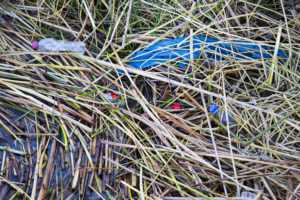
Since it has been unable to equip itself with a waste treatment programme that is up to the challenge and it has failed to provide solutions for daily collections, the local authorities in Bolivia, aware of the problem, have developed signage aimed at alerting the population. This ranges from signs prohibiting the dumping of rubbish to other more philosophical methods, through to powerful messages like “La basura mata” (garbage kills). You can even find notices to inform that invite witnesses of polluting actions to act as responsible citizens.
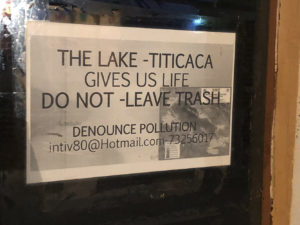
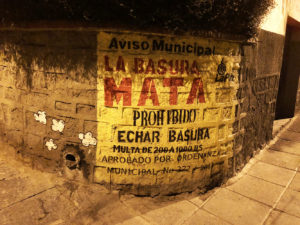
Unfortunately, these initiatives, whether they’re aimed at raising awareness or cracking down on criminal behaviour, haven’t been successful. Solely the implementation of collection and waste treatment circuits could impede the exponential growth of illicit waste.
Recycling and solar energy in the Uros
The history of the Uros people is coloured by self-imposed exile to escape the Inca invader among others. In the 13th century, they chose to emigrate to Lake Titicaca by building floating islands made of reed. The islands float, but they are tied down with ropes to Eucalyptus trunks so they don’t drift away.
Since that time, the tradition of the floating islands has endured. The Uros people disappeared around the 1950s and today there are around 2,000 Aymaras who are perpetuating the tradition. Roughly every fortnight, a new layer of reed is added to each island to compensate for their erosion.
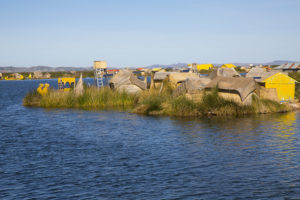
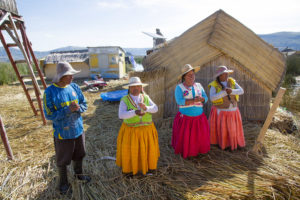
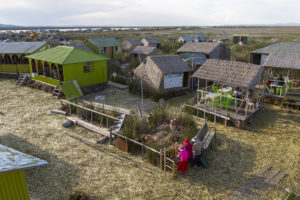
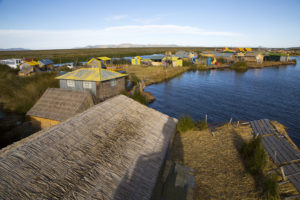
The main source of income for inhabitants of the Uros islands is tourism. For a few bolivianos, visits are organised from the city of Puno. After around 30 minutes on the water, you can set foot on the moving ground and be greeted by the president of the island. Each island has its own president. He is in charge of explaining to tourists the archipelago’s history and the building technique used. As soon as I arrived on the island, I noticed that the bench on which I was offered a seat was a mixture of plaited reed and PET bottles…!
Eloy, the president of the island, explained to me that for some years they’ve been using the plastic bottles as floats. Of course, they haven’t replaced reed, but they have been lodged at the heart of the braiding, increasing the buoyancy whilst retaining the traditional aspect of the reed. The integration of PET bottles reduces the amount of waste that has to be shipped back to Puno.

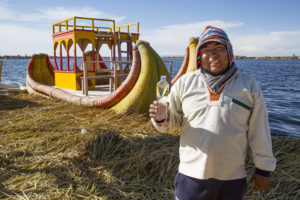
Since 2015, they have even made these bottles a key element of the structure of their ancestral puma-headed boats. Eloy’s boat contains 4,000 bottles. They float better, age less quickly and can be made faster. It’s not certain that it’s good news for the lake, but it is proof of how traditions adapt and evolve.
Something else caught my eye. The majority of the small reed houses have a source of electricity provided by solar panels, a gift from the government. That made me think about our boat; like us they float and they use the energy from the sun. Here though, the veneration of the sun is ancestral. The temple of the sun and the island of the sun remain hallowed sites in Inca mythology. The heavenly light is a source of both energy and inspiration, as well as one of the factors that contributes to the degradation of illicit plastic in our environment…
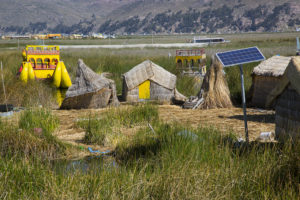
Indeed, the island of the sun and its little sister the island of the moon are real tourist magnets. You get there from the village of Copacabana on the Bolivian shore. Two highly symbolic sites in Inca history, they are having to take up the challenge presented by the vast quantities of waste generated by the tourist industry. Plastic floats along the shores and they burn what they can at the bottom of their gardens. Here too a few signs are dotted about to remind us that human ignorance has a tendency to destroy nature’s beauty.
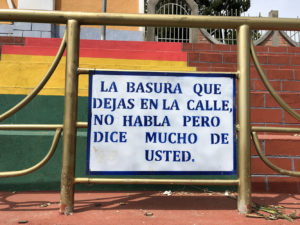
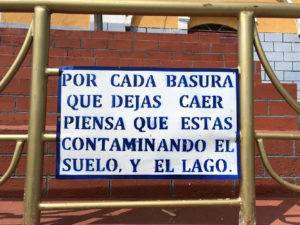
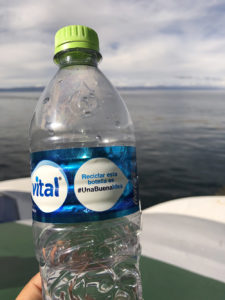
Raising awareness is a job we do relentlessly at every step of our journey around the world. It’s a key mainstay in our action with the general public (Share), which enables us to share what we have observed (Learn) for years through the Odyssey programme. It’s also a necessary prerequisite for the action we carry out (Act) in a bid to stem the incessant flow of plastics towards the ocean, by putting forward a solution aimed at transforming it into energy.
Our stopovers in Peru (March to May) and Chile (June and July) aim to develop the network which will, we hope, enable us to improve the situation in these two countries in terms of plastic waste pollution.”
Text and illustrations by Peter Charaf